Our Library
Explore our publications, from research papers and series to educational materials, covering all aspects of conflict transformation and peace promotion.
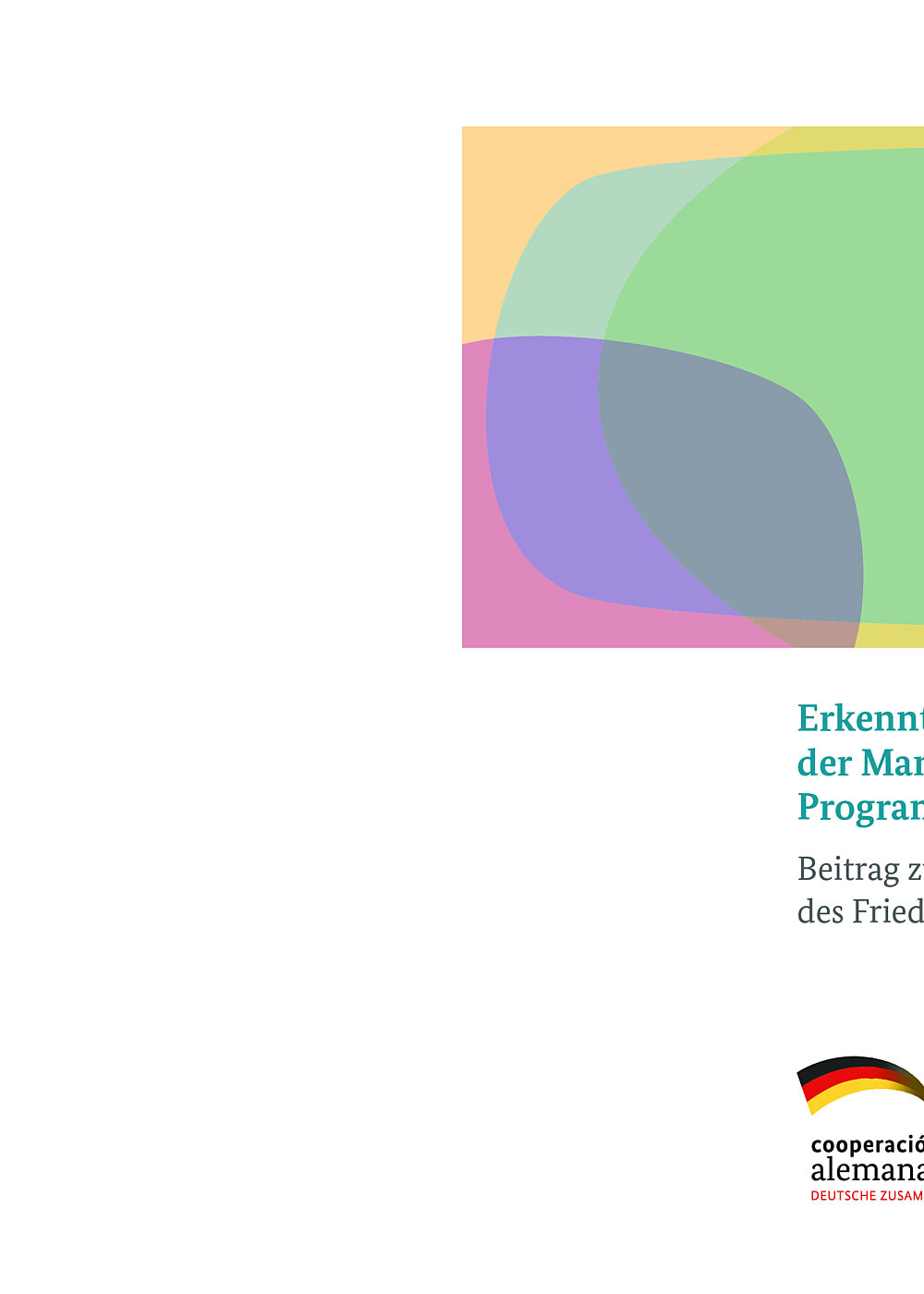
Erkenntnisse für die Entwicklung und Gestaltung der Management- und Steuerungsstruktur eines Programms der Technischen ZusammenarbeitBeitrag zur Systematisierung von Lernerfahrungen des Friedensprogramms Cercapaz
Das Friedensprogramm Cercapaz mit einer Laufzeit von 8 Jahren und 3 Monaten (2007-2015) wurde in 3 Phasen und pro Phase mit einer jeweils veränderten Management- und Steuerungsstruktur durchgeführt. Das Programm ist damit einen Lernweg gegangen, der es wert ist, ihn nicht nur auf der Ebene der fachlichen Lernerfahrungen zu systematisieren, sondern auch bezüglich der Entwicklung seiner Management- und Steuerungsstruktur. Die Ergebnisse dieses Dokuments basieren auf Interviews, einschlägigen Programmdokumenten sowie Fachliteratur. Die Unterscheidung zwischen Management- und Steuerungsstruktur wird entsprechend der „Landkarte der Logiken“ der GIZ.
- Year2015
- Author(s)Elke Breckner, Uta Giebel
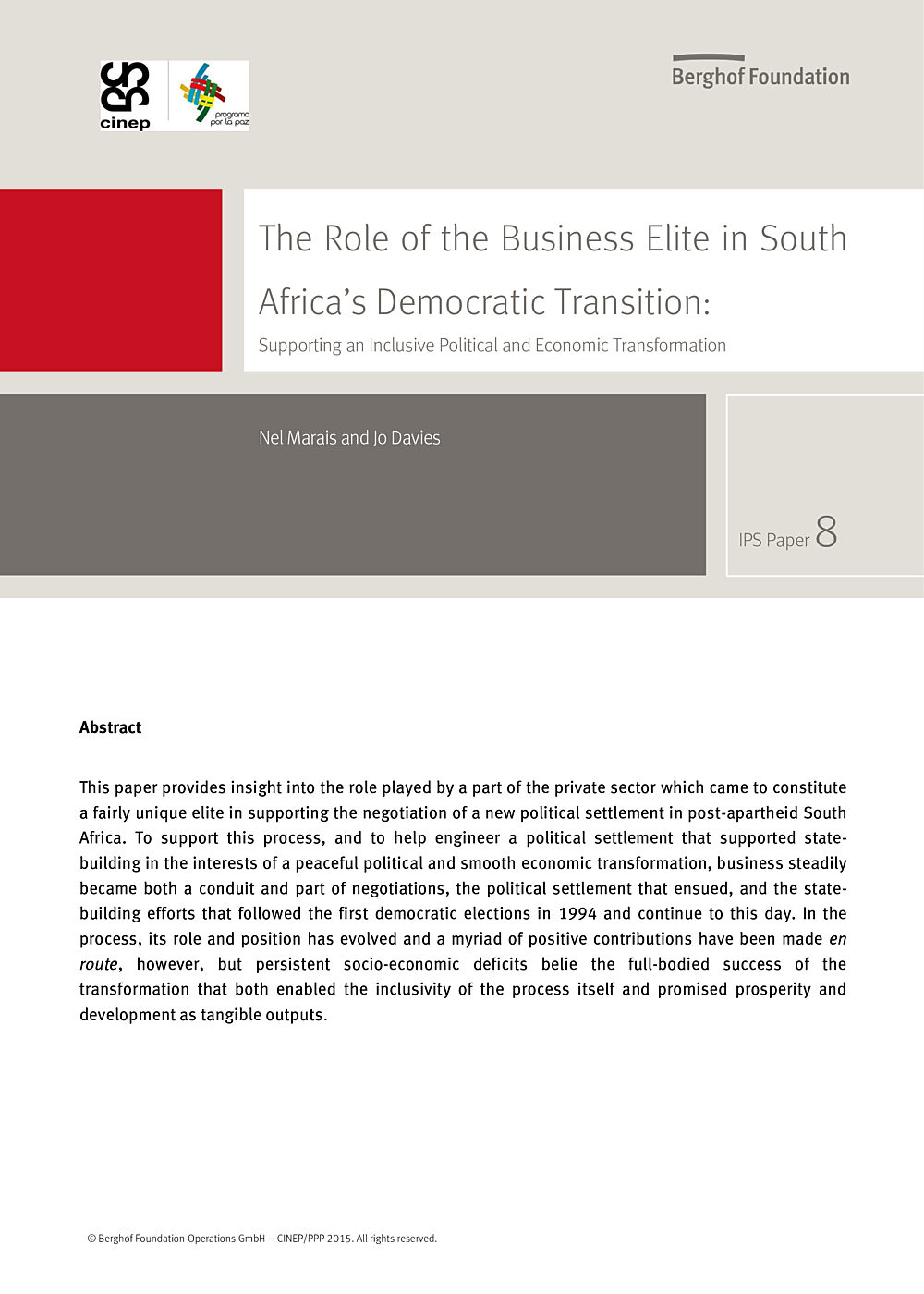
The Role of the Business Elite in South Africa’s Democratic Transition: Supporting an Inclusive Political and Economic TransformationIPS Paper No. 8
This paper provides insight into the role played by a part of the private sector which came to constitute a fairly unique elite in supporting the negotiation of a new political settlement in post-apartheid South Africa. To support this process, and to help engineer a political settlement that supported state-building in the interests of a peaceful political and smooth economic transformation, business steadily became both a conduit and part of negotiations, the political settlement that ensued, and the state-building efforts that followed the first democratic elections in 1994 and continue to this day. In the process, its role and position has evolved and a myriad of positive contributions have been made en route. However, persistent socio-economic deficits belie the full-bodied success of the transformation that both enabled the inclusivity of the process itself and promised prosperity and development as tangible outputs.
- Year2015
- Author(s)Nel Marais, Jo Davies
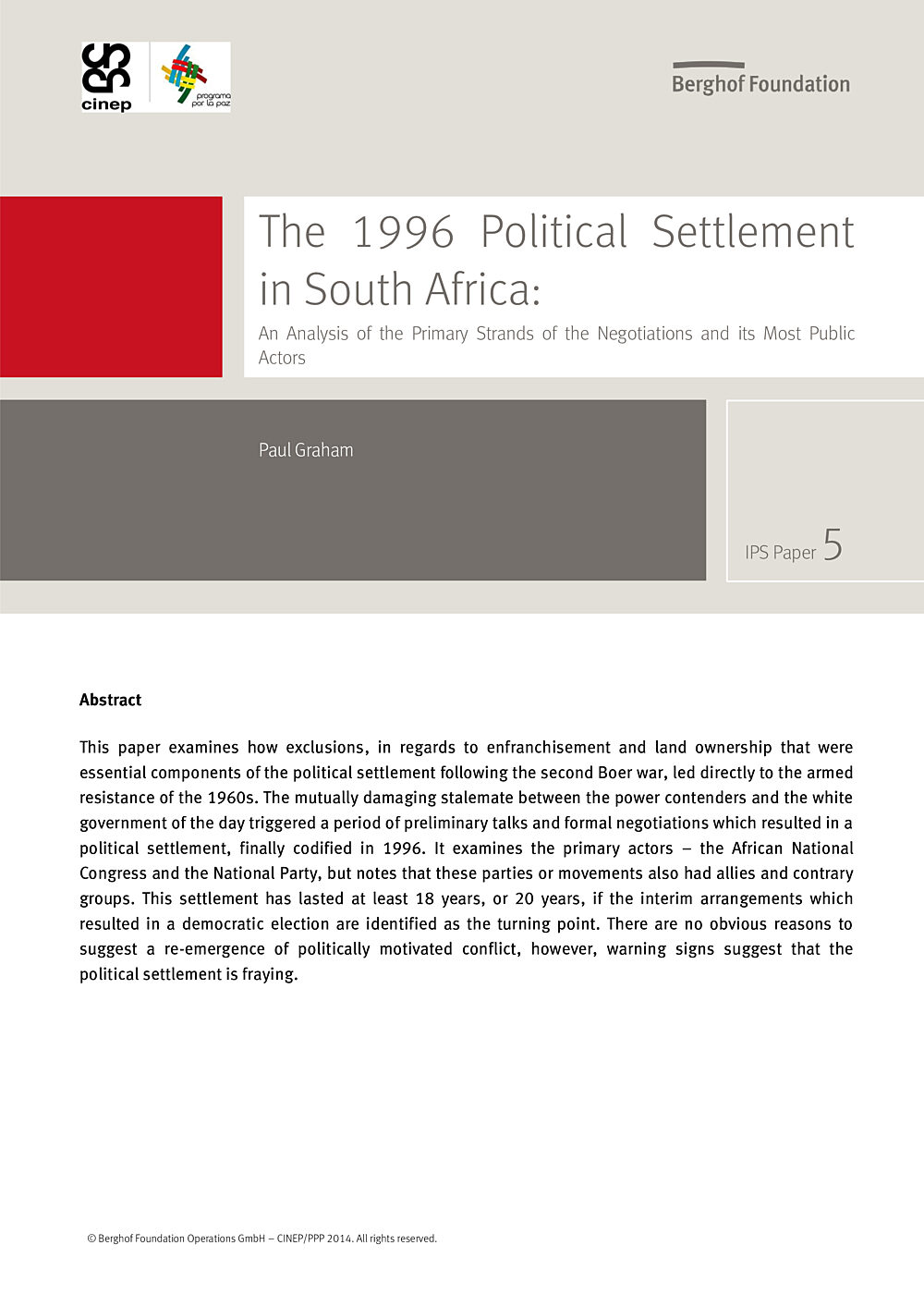
The 1996 Political Settlement in South Africa: An Analysis of the Primary Strands of the Negotiations and its Most Public ActorsIPS Paper No. 5
This paper examines how exclusions, in regards to enfranchisement and land ownership that were essential components of the political settlement following the second Boer war, led directly to the armed resistance of the 1960s. The mutually damaging stalemate between the power contenders and the white government of the day triggered a period of preliminary talks and formal negotiations which resulted in a political settlement, finally codified in 1996. It examines the primary actors – the African National Congress and the National Party, but notes that these parties or movements also had allies and contrary groups. This settlement has lasted at least 18 years, or 20 years, if the interim arrangements which resulted in a democratic election are identified as the turning point. There are no obvious reasons to suggest a re-emergence of politically motivated conflict, however, warning signs suggest that the political settlement is fraying.
- Year2015
- Author(s)Paul Graham

The Nepalese Peace Process: Faster Changes, Slower ProgressIPS Paper No. 9
This paper analyses the ways in which the peace process, which put an end to the armed conflict in Nepal in 2006, has sought to address popular demands for inclusive democracy. It does so by reviewing the various cycles of negotiation, codification and materialisation of political reforms since the People’s Movement of 2006, the Comprehensive Peace Accord and the (first and second) Constituent Assemblies. It focuses in particular on one area of reform that has been widely debated among political and civil society sectors, namely, state restructuring through power decentralisation. Overall, the paper develops the arguments that although there is a widespread consensus that state institutions should be made more inclusive and representative of the makeup of society, the voices of power contenders, such as the Madhesi and Janajati communities, have failed to be adequately represented in constitutional debates.
- Year2015
- Author(s)Padma Prasad Khatiwada
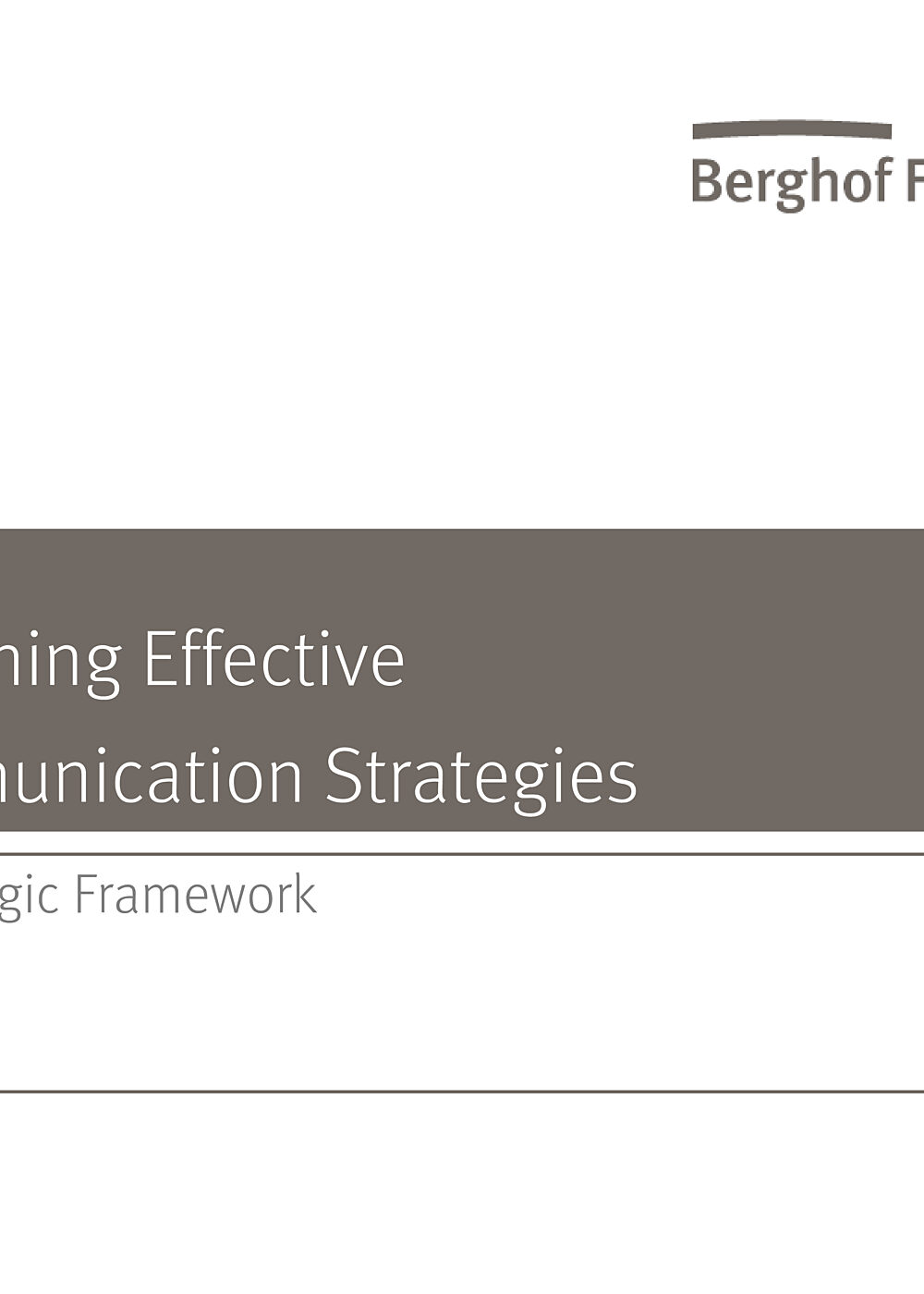
Designing Effective Communication StrategiesA Strategic Framework
This strategic framework was developed during the 6th Meeting on Negotiations entitled Designing Effective Communication Strategies held in October/November 2014, in Berlin. It provides an overview of some of the most frequent communication challenges Resistance and Liberation Movements (RLMs) are facing in negotiation processes and ways to tackle them. While in no way exhaustive, we hope that conflict actors find this overview useful both for reflecting on and enhancing their own communication strategies.
- Year2015
- Author(s)Katrin Planta, Luxshi Vimalarajah
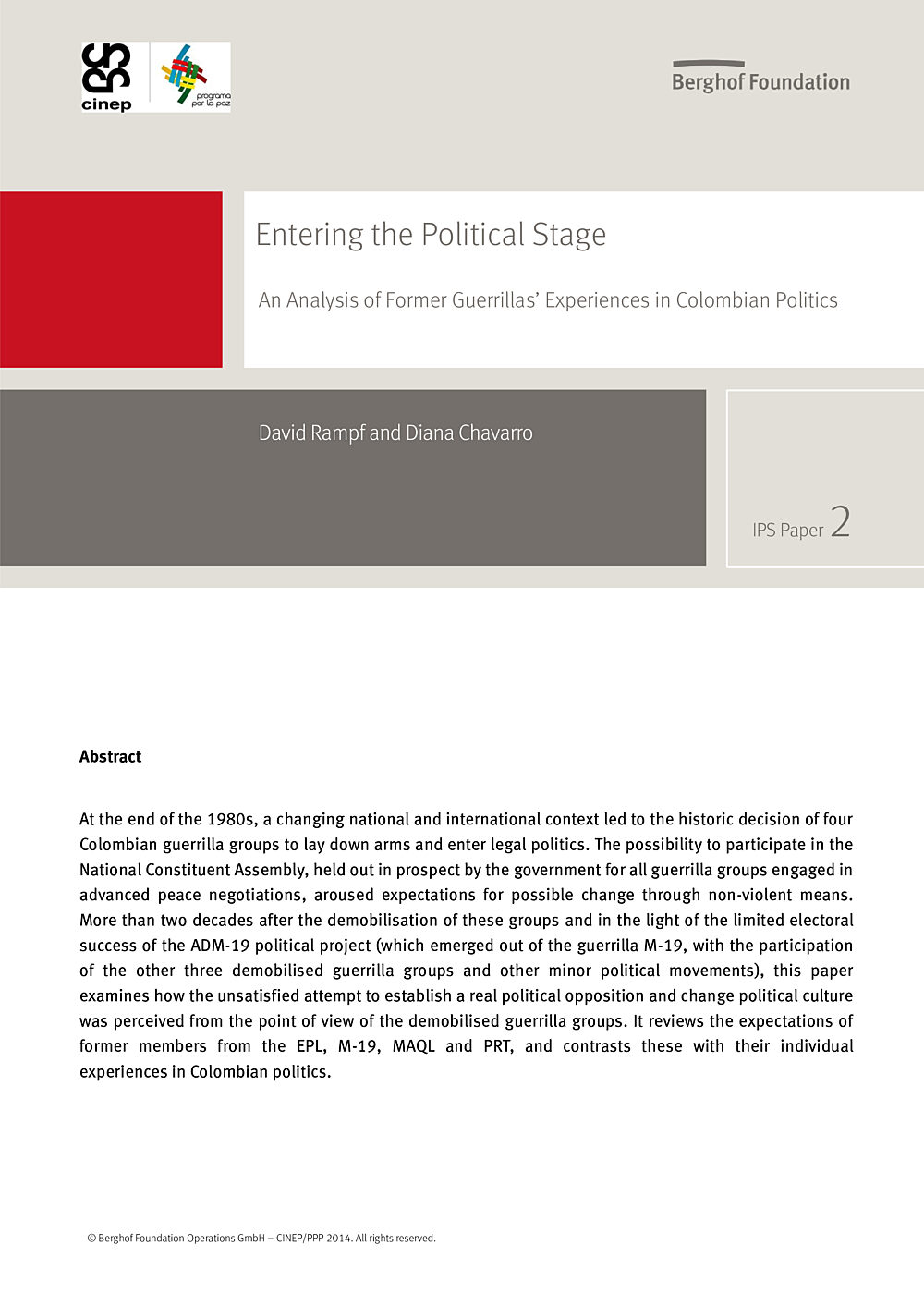
Entering the Political Stage: An Analysis of Former Guerrillas’ Experiences in Colombian PoliticsIPS Paper No. 2
More than two decades after the demobilisation of these groups and in the light of the limited electoral success of the ADM-19 political project (which emerged out of the guerrilla M-19, with the participation of the other three demobilised guerrilla groups and other minor political movements), this paper examines how the unsatisfied attempt to establish a real political opposition and change political culture was perceived from the point of view of the demobilised guerrilla groups. It reviews the expectations of former members from the EPL, M-19, MAQL and PRT, and contrasts these with their individual experiences in Colombian politics.
- Year2014
- Author(s)David Rampf, Diana Chavarro

Committed to Unity: South Africa’s Adherence to Its 1994 Political SettlementIPS Paper No. 6
This paper reviews the commitment of the remaining power contenders and other political actors to the settlement which was reached between 1993 and 1996. Based on interviews with three key actors now in opposing political parties represented in the National Assembly, the paper makes the case for a continued commitment to, and consensus on, the ideals and principles of the 1996 Constitution. It provides evidence of schisms in the dominant power contender (the African National Congress) which have not led to a return in political violence post-settlement. The paper makes the point that, while some of this was the result of President Nelson Mandela’s presence, more must be ascribed to the constitutional arrangements and commitments of the primary political actors and the citizens of South Africa.
- Year2014
- Author(s)Paul Graham
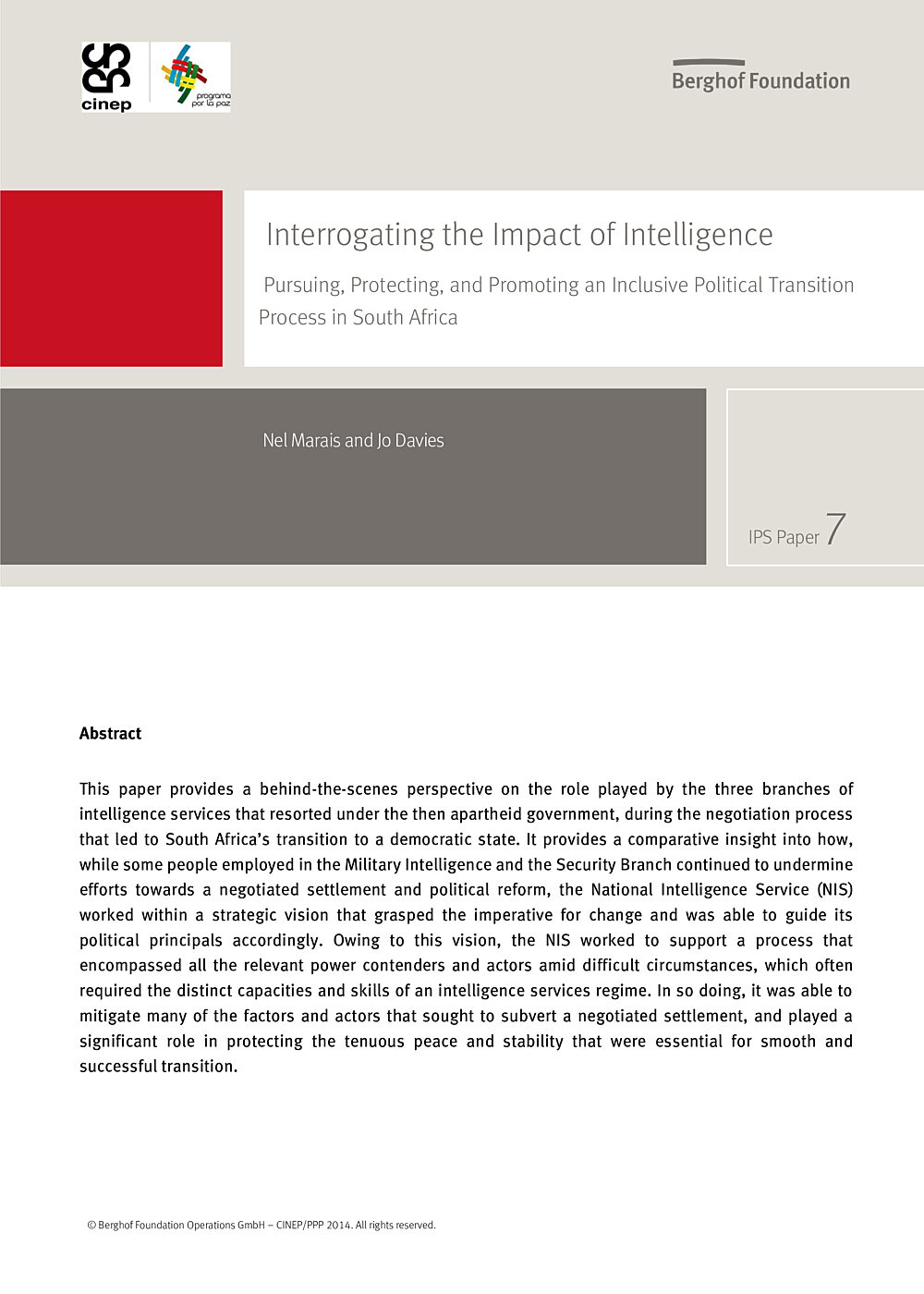
Interrogating the Impact of Intelligence: Pursuing, Protecting, and Promoting an Inclusive Political Transition Process in South AfricaIPS Paper No. 7
This paper provides a behind-the-scenes perspective on the role played by the three branches of intelligence services that resorted under the then apartheid government, during the negotiation process that led to South Africa’s transition to a democratic state. It provides a comparative insight into how, while some people employed in the Military Intelligence and the Security Branch continued to undermine efforts towards a negotiated settlement and political reform, the National Intelligence Service (NIS) worked within a strategic vision that grasped the imperative for change and was able to guide its political principals accordingly.
- Year2014
- Author(s)Nel Marais, Jo Davies

احتضان منظومة تعليم مدنية ومقاومة للعنف في الاردندليل للمدارس والجامعات وتدريب المدرسين
هذا الدليل من شأنه أن يدمج بين السبل الأساسية للتربية المدنية في الأردن والخبرات والدراسات العالمية حول التربية اللاعنفية والتربية على السلام والوقاية من العنف. يتألف الدليل من ثلاث وحدات لها أهداف تتعلق بالمضمون وأسس منهجية مختلفة، وهي تشمل: القصّ المرئي والمسرح التفاعلي وكرة قدم الشوارع للتسامح. وهو مصمم للتطبيق في المدارس والجامعات وأيضًا لعمل الشباب التطوعي في مخيمات اللاجئين مثلاً. هذا الدليل مدعم بالملصقات والأفلام التعليمية، بالإضافة إلى دراسة حول العنف فيالجامعات في الأردن.
- Year2014
- Author(s)Uli Jäger, Anne Romund, Hannah Reich
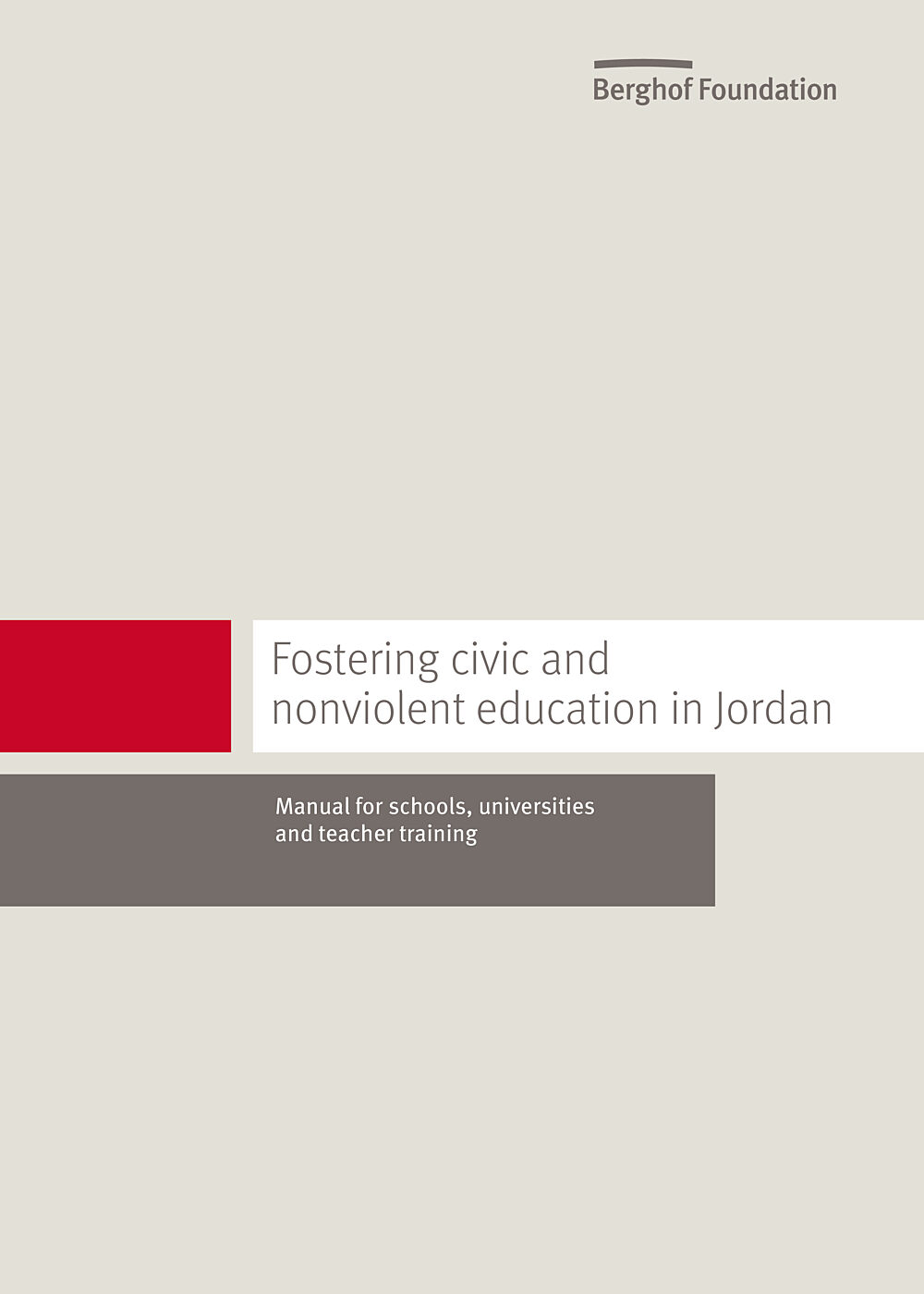
Fostering civic and nonviolent education in Jordan
This Manual combines the basic approaches for Civic Education in Jordan with international experiences and studies on Nonviolent Education, Peace Education and Violence Prevention. It is composed of three modules with different content-related aims and methodological principles. These include: Visual Storytelling, Interactive Theatre and Streetfootball for Tolerance. It is designed for the use at schools and universities, as well as for voluntary youth work, for example in refugee camps. The manual is supplemented by posters, educational movies, as well as a study on violence at universities in Jordan.
- Year2014
- Author(s)Uli Jäger, Anne Romund, Hannah Reich